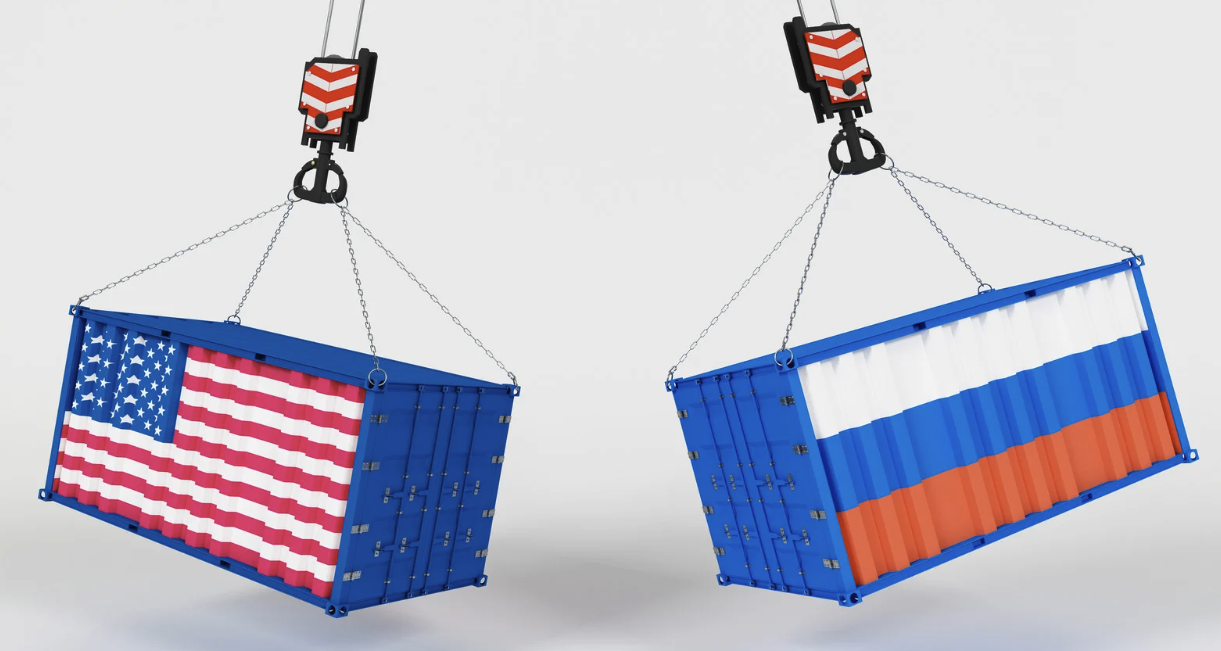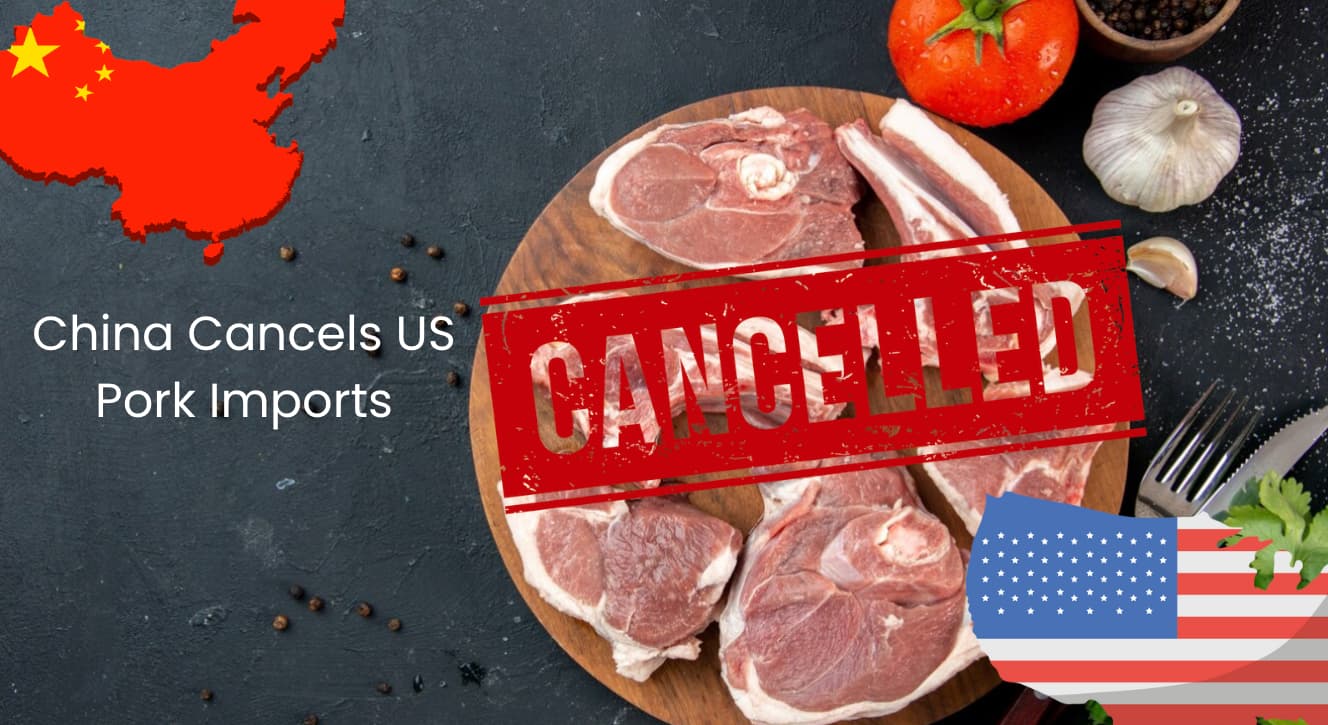China has cancelled 12,000 tons of US pork imports in 2025, marking the largest cut in pork orders between the two countries in years.
This decision comes during ongoing trade tensions and high tariffs that make it tough for American pork producers to compete in China’s market.
These cancelled shipments have already caused big changes and raised serious questions about the stability of agricultural exports.
But what does this mean for US pork exports by country? Will prices crash, or can farmers find new markets? Let’s break it down.
Quick Insights ⚡:
- China cancels US pork imports starting in 2025, shifting global trade dynamics.
- US pork producers must pivot to new markets, such as Mexico, Japan, and South Korea.
- Rising domestic demand in China and trade tensions drive the decision.
- Potential price drops in the US, but long-term strategies can mitigate losses.
📌Also Read: 2025 Import Tax from China to USA: Quick Guide
Why Did China Cancel US Pork Imports in 2025?
China’s decision to halt its purchase of US pork in 2025 is rooted in rising trade tensions, new tariffs, and official concerns. It affected farmers, markets, and prices, making it a major event for the global pork industry.
Timeline of the Ban—What Happened, When, and Why?
In early 2025, tensions between the US and China resurfaced over longstanding trade disputes.
By April, China canceled about 12,000 metric tons of US pork shipments. This was the largest single cancellation since the pandemic started.
Key events in the timeline include:
- Ongoing US tariffs on Chinese goods from earlier trade conflicts
- China adding or raising retaliatory tariffs on many US farm products, including pork
- New trade talks breaking down in March 2025
- Official announcement from China’s customs office to cancel large pork contracts in April
Food safety concerns were mentioned but did not spark the initial action. Instead, most of the pressure came from politics and economics.
China’s Stated Reasons
Chinese officials cited stricter food safety regulations and the need to protect their domestic pork industry as the main reasons. Health checks on imports were increased just before the cancellations.
China also pointed to the high cost of US pork due to tariffs. With tariffs reaching up to 172 percent, US pork became much more expensive compared to meat from Europe and South America.
Another reason given was an effort to support Chinese pig farmers. By cutting US pork imports, China aimed to help its local producers recover from losses caused by disease and earlier supply shocks.
The Global Ripple Effect Begins
China’s move immediately affected pork prices and markets worldwide. You could see the changes in the US farm country first. Pork futures dropped to their lowest levels since 2020. Many American pig farmers worried about their income.
- Pork products meant for China started flooding other export markets
- European and Brazilian pork gained a larger share in China almost overnight
- US pork shipments scheduled for China had to be redirected or sold at lower prices
The impact was also felt in the shipping industry and in the countries that compete with the US in pork exports.
For consumers, prices were more stable in China, whereas American prices experienced sharp fluctuations. The ban started a shift in global trade flows that could last for years.
📌Also Read: China Import Tariffs: Essential Guide for Importers
What Happens Now That China Cancels US Pork Imports?

China has canceled 12,000 tons of US pork imports. This sudden change affects US prices, farmer incomes, and where the US can sell pork next.
Immediate Impact on US Pork Prices & Farmers
With China canceling such a large amount, much of that pork now stays in the US market. This can lead to oversupply.
When there is more pork than people want to buy, prices usually drop fast. Lower prices mean farmers get less money for each hog.
Many US pork producers count on exports to China for a big part of their sales. The sudden loss creates financial strain and worry for farms, especially smaller ones. If prices stay low, some farms may have to cut costs or even lay off workers.
Key issues:
- Extra pork in the US market lowers prices.
- Farmers get paid less per animal.
- Financial stress grows, especially for small producers.
Top Alternative Markets for US Pork Exports
Without China, you need to focus on other countries buying US pork.
- Mexico is the top foreign buyer. It may buy more US pork now that US pork prices are lower and there is an increased supply.
- Japan and South Korea both have steady demand for US pork, especially for higher-quality cuts and processed products. They pay a premium, but both markets are already competitive.
- Canada and the Philippines are showing a growing demand. They mainly import for processed meats and foodservice needs.
Long-Term Strategies for US Pork Industry
To avoid this problem in the future, you will need to adopt new strategies.
Diversifying export markets is key. This means selling to many countries instead of relying so much on just one, like China.
You can also invest in value-added pork products, including things like sausages, bacon, and organic pork. These products can be sold at a higher price and to more locations.
Important strategies:
- Reach out to more countries in Asia, Latin America, and Africa.
- Develop and promote processed and organic pork items.
- Work on trade deals with stable and growing economies.
- Build stronger relationships with current buyers, like Mexico and Japan.
By making these changes, you lower the risk that one country's decision can hurt your business.
📌Also Read: How Long Does It Take to Ship from China to USA?
How Other Countries Benefit from China’s Decision

When China canceled a large amount of US pork imports, other global suppliers quickly responded to fill the market gap.
This shift gives both international pork exporters and US consumers new opportunities and challenges.
Brazil & EU Fill the Gap in Chinese Pork Imports
Brazil is now sending much more pork to China. Its main advantage is lower production costs, which mean cheaper pork for Chinese buyers.
You will see Brazilian pork become a bigger part of China’s import totals.
The European Union has also gained from the US-China conflict. European pork is often considered high-quality and well-suited to China’s consumer tastes.
Key changes:
- Brazil’s pork exports to China have grown, thanks to low prices.
- Top EU countries supplying pork, such as Spain and Germany, have increased their shipments.
- Chinese companies now sign new deals directly with Brazilian and EU producers.
- Countries outside the US are becoming more important in meeting China’s demand for pork.
Will US Pork Become Cheaper Domestically?
The drop in US sales to China could mean more pork stays in the US market. This could lead to lower pork prices at grocery stores, at least for a limited time.
You might see these changes:
- Short-term: Prices at supermarkets or for bacon and ham could fall.
- Long-term: Farmers may cut back on how much pork they produce.
- Pork processors and exporters might try to find new markets or lower production.
If you buy pork in the US, China’s decision could offer you some savings. But if US producers can't find other buyers, you could also see smaller farms struggle.
📌Also Read: Trumps China Tariffs: The Effect of 10% Rate Starting 2025
Conclusion: Adapting to a New Pork Trade Landscape
You are facing a major shift in the global pork market. With China’s cancellation of 12,000 tons of US pork imports, there is now a clear need for change in how you approach international trade.
What steps can you take to adapt?
- Explore new export markets such as Southeast Asia, Mexico, and Europe.
- Adjust production to meet the demands of different buyers.
- Strengthen relationships with current trade partners.
You may need to rethink your strategies. This could include:
- Investing in new technology and processing methods.
- Promoting US pork in countries with growing demand.
- Monitoring shifts in global tariffs and policies.
Staying informed and adaptable gives you an advantage. As trade talks change, you have a chance to find new opportunities, even as you deal with setbacks. Being open to innovation helps you remain a strong player in the pork industry.
“Don’t risk costly mistakes. ☎️ Contact Choi & Partners for clear, expert legal guidance in China. Their team will help you navigate complex laws, protect your interests, and move forward with confidence. Reach out today for advice you can trust.”
FAQs: China Cancels US Pork Imports
China’s decision to cancel US pork imports is tied to tariffs, trade tension, and changing market needs. The US pork industry now faces high hurdles in what was once one of its biggest export markets.
Is China buying US pork?
Right now, China has sharply reduced its US pork purchases. In 2025, China canceled about 12,000 metric tons of US pork orders due to rising tariffs and political disagreements.
Why does China import so much pork?
Chinese consumers eat more pork than any other type of meat. Even though China produces about half of the world's pork, demand in the country is so high that it often needs extra imports to cover shortages.
How much pork does China buy from the US?
Before the recent cancellations, China was the third largest market for US pork exports. In some years, China bought hundreds of thousands of metric tons. The latest cancellations are the largest since the pandemic.
Why did China stop buying US pork?
China raised tariffs on US pork, making it too expensive compared to pork from other countries. These higher costs come from ongoing trade disputes between the US and China.
How can US pork farmers survive this change?
US pork growers might shift their focus to other export markets or cut costs at home. Some may try to sell more pork in the domestic market or find new international buyers. Government support programs could also help.
Is this the first time China has banned US pork?
No, this isn’t the first time China has blocked or restricted US pork imports. Similar bans and cancellations happened during earlier trade wars and also after the 2020 pandemic. These decisions are usually tied to trade issues or concerns about food safety.
Subscribe to receive updates
Subscribe to receive the latest blog posts to your inbox every week.



